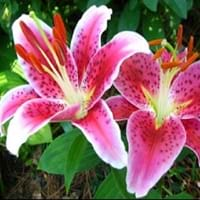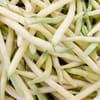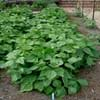Life Span
Annual
Perennial
Type
Vegetable
Bulb or Corm or Tuber
Origin
Central America, South America
North America, Europe, Africa, Asia
Types
Willow Leaf, Sieva Lima, Dixie Speckled
Gloriosoides Baker Lily, Speciosum Lily
Habitat
Humid climates, Subtropical climates, Warmer regions
Not Available
USDA Hardiness Zone
6-11
2-8
AHS Heat Zone
Not Available
8-1
Sunset Zone
Not Available
21,22
Habit
Vining/Climbing
Upright/Erect
Minimum Width
Not Available
Flower Color
White, Ivory
White, Yellow, Red, Green, Purple, Gold, Pink, Rose, Peach, Burgundy, Bronze
Flower Color Modifier
Bicolor
Bicolor
Fruit Color
Green
Yellow green, Sandy Brown
Leaf Color in Spring
Green
Green, Dark Green
Leaf Color in Summer
Green
Light Green
Leaf Color in Fall
Green
Several shades of Green
Leaf Color in Winter
Green
Light Green
Leaf Shape
Willow-shaped
Long Linear
Plant Season
Not Available
Spring, Summer, Fall
Sunlight
Full Sun
Full Sun, Partial Sun, Partial shade
Type of Soil
Loam, Sand
Clay, Loam, Sand
The pH of Soil
Acidic, Neutral, Alkaline
Acidic, Neutral, Alkaline
Soil Drainage
Well drained
Well drained
Bloom Time
Indeterminate
Not Available
Tolerances
Drought
Drought
Where to Plant?
Container, Ground, Pot
Container, Ground, Pot
How to Plant?
Seedlings
Seedlings
Plant Maintenance
High
Medium
Watering Requirements
Allow to dry out slightly between watering, Do Not over Water, Requires regular watering
Needs more water during establishment, Use Mulches to help prevent water loss during hot and windy weather, Water daily during growing season
In Summer
Not so frequently
Lots of watering
In Spring
Alternate Days
Moderate
In Winter
Drought Tolerant
Average Water
Soil pH
Acidic, Neutral, Alkaline
Acidic, Neutral, Alkaline
Soil Type
Loam, Sand
Clay, Loam, Sand
Soil Drainage Capacity
Well drained
Well drained
Sun Exposure
Full Sun
Full Sun, Partial Sun, Partial shade
Pruning
Prune to control growth
Prune in early spring, Prune in fall, Remove dead or diseased plant parts
Fertilizers
organic fertlizers
All-Purpose Liquid Fertilizer, Compost, Fertilize only when soil is poor, slow-release fertilizers
Pests and Diseases
Aphids, Armyworm, Bean rust, Bean weevils, Corn earworm, Cucumber beetles, Curly top, Damping off, Darkling beetles, Earwigs, Fusarium root rot, Grasshoppers, Leafhoppers, Loopers, Lycaenid pod borers, Lygus bugs, Mosaic viruses, Nematodes, Powdery mildew, Saltmarsh caterpillar, Seedcorn maggot, Slugs, Snails, Spider mites, Stink bugs, Thripes, White mold, Whiteflies
Lily Beetle
Plant Tolerance
Drought
Drought
Flowers
Insignificant
Showy
Flower Petal Number
Single
Single
Fragrant Flower
Not Available
Yes
Fragrant Fruit
Not Available
No
Fragrant Leaf
Not Available
No
Fragrant Bark/Stem
Not Available
No
Showy Bark
Not Available
No
Foliage Texture
Medium
Not Available
Foliage Sheen
Matte
Not Available
Self-Sowing
Not Available
Yes
Attracts
Not Available
Not Available
Allergy
Not Available
Not Available
Aesthetic Uses
Not Available
Beautification, Showy Purposes
Beauty Benefits
Not Available
Making cosmetics, Skin cleanser
Edible Uses
Yes
Sometimes
Environmental Uses
Not Available
Not Available
Medicinal Uses
cholesterol-lowering, constipation, Digestive disorders, Fiber, Heart problems
Acne, Burns, Heart problems
Part of Plant Used
Seeds
Whole plant
Other Uses
Used As Food
Cosmetics, Oil is used for aromatherapy, Used As Food, Used as Ornamental plant
Used As Indoor Plant
No
Yes
Used As Outdoor Plant
Yes
Yes
Garden Design
Edible, Herb, Vegetable
Alpine, Container, Cutflower, Feature Plant, Mixed Border, Wildflower
Botanical Name
PHASEOLUS lunatus
Lilium speciosum
Common Name
Butter Bean, Lima Bean
Japanese Lily
In Hindi
सेम फली
जापानी लिली
In German
Limabohne
Pracht-Lilie
In French
Haricot de Lima
Lily japonais
In Spanish
Haba
lirio japonés
In Greek
Γίγαντας
Ιαπωνικά κρίνος
In Portuguese
feijão-Lima
lírio japonês
In Polish
Lima Bean
japoński lilia
In Latin
Lima Bean
lilium Italica
Phylum
Tracheophyta
Tracheobionta
Class
Magnoliopsida
Liliopsida
Family
Fabaceae
Liliaceae
Clade
Angiosperms, Eudicots, Rosids
Angiosperms, Monocots
Subfamily
Faboideae
Lilioideae
Number of Species
Not Available
Importance of Lima Bean and Japanese Lily
Want to have the most appropriate plant for your garden? You might want to know the importance of Lima Bean and Japanese Lily. Basically, these two plants vary in many aspects. Compare Lima Bean and Japanese Lily as they differ in many characteristics such as their life, care, benefits, facts, etc. Every gardener must at least have the slightest clue about the plants he wants to plant in his garden. Compare their benefits, which differ in many ways like facts and uses. The medicinal use of Lima Bean is cholesterol-lowering, constipation, Digestive disorders, Fiber and Heart problems whereas of Japanese Lily is Acne, Burns and Heart problems. Lima Bean has beauty benefits as follows: Not Available while Japanese Lily has beauty benefits as follows: Not Available.
Compare Facts of Lima Bean vs Japanese Lily
How to choose the best garden plant for your garden depending upon its facts? Here garden plant comparison will help you to solve this query. Compare the facts of Lima Bean vs Japanese Lily and know which one to choose. As garden plants have benefits and other uses, allergy is also a major drawback of plants for some people. Allergic reactions of Lima Bean are Not Available whereas of Japanese Lily have Not Available respectively. Having a fruit bearing plant in your garden can be a plus point of your garden. Lima Bean has no showy fruits and Japanese Lily has no showy fruits. Also Lima Bean is not flowering and Japanese Lily is not flowering . You can compare Lima Bean and Japanese Lily facts and facts of other plants too.





